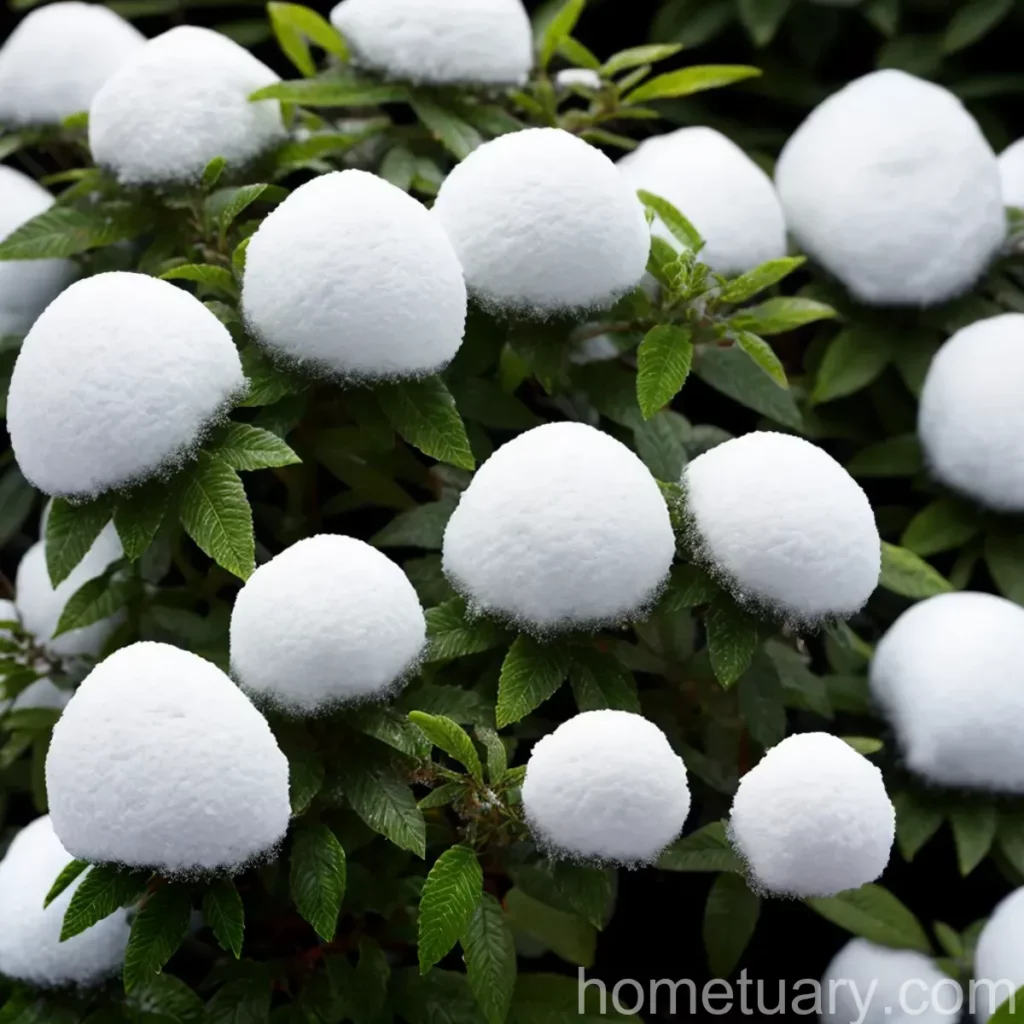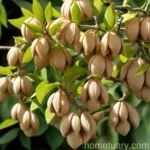The Amazing World of Snowbush (Breynia disticha)
In the world of plants, there are countless species that captivate our imagination and add a touch of beauty to our surroundings. Snowbush (Breynia disticha) is one such plant. With its stunning foliage and versatile nature, this plant has gained popularity among gardeners and plant enthusiasts. This blog post will serve as your comprehensive guide to understanding, growing, and caring for snowbush. From its cultural significance to its intricate maintenance requirements, we will explore every aspect of this enchanting plant.
What is Snowbush (Breynia disticha)?
Snowbush, scientifically known as Breynia disticha, is a tropical shrub that belongs to the Phyllanthaceae family. It is native to the Pacific Islands, Southeast Asia, and Australia. The plant is known for its striking, variegated foliage, which makes it a popular choice for ornamental landscaping and indoor décor.
Key Takeaways
Before we delve into the specifics of caring for snowbush, let’s highlight some key takeaways about this fascinating plant:
- Breynia disticha: This is the scientific name of snowbush, which serves as a crucial identifier in botanical classifications.
- Snowbush plant: The snowbush is a tropical shrub with distinctive, variegated leaves that set it apart from other plants.
- Snowbush care: Proper care is essential for the health and vitality of snowbush, including considerations such as watering, sunlight, and soil requirements.
- Snowbush varieties: There are several cultivars of snowbush, each with unique characteristics and color variations.
- Breynia disticha cultivation: Understanding the cultivation requirements of snowbush is crucial for successful growth and development.
- Snowbush propagation: Snowbush can be propagated through various methods, such as stem cuttings and air layering.
Now that we have a basic understanding of snowbush, let’s explore the intricate details of its cultivation, care, and maintenance.
Culture
Understanding the cultural significance of snowbush provides insight into its historical and present-day uses. This section will explore the cultural aspects, uses, and significance of snowbush in various contexts.
Uses
Snowbush serves both practical and aesthetic purposes in different settings. Its uses include:
- Ornamental landscaping
- Indoor decoration
- Medicinal applications
- Wildlife attraction
- Symbolism in traditional folklore
The versatile nature of snowbush makes it a valuable addition to gardens, homes, and natural habitats, contributing to the overall aesthetic and ecological balance.
Water
Proper watering is crucial for the health and vitality of snowbush. Understanding the specific water requirements of this plant is essential for maintaining its lush foliage and overall well-being.
Watering should be done in accordance with the following guidelines:
- Moderate watering: Snowbush prefers consistent moisture without waterlogging the soil.
- Well-draining soil: Soil should be well-draining to prevent water accumulation around the roots.
- Avoid overwatering: Excessive moisture can lead to root rot and other water-related issues.
Ensuring the right balance of moisture in the soil is essential for promoting healthy growth and vibrant foliage in snowbush.
Sunlight
Proper sunlight is essential for the growth and development of snowbush. Understanding its sunlight requirements is crucial for providing an optimal environment for the plant.
Consider the following sunlight guidelines:
- Partial shade to full sun: Snowbush thrives in partial shade but can tolerate full sun with adequate moisture.
- Protection from intense midday sun: Shield the plant from direct, intense sunlight during peak hours to prevent leaf scorching.
- Indoor considerations: When grown indoors, ensure that snowbush receives bright, indirect light for optimal growth.
Providing the right balance of sunlight, whether outdoors or indoors, is essential for the overall health and appearance of snowbush.
Fertilizer
Applying the appropriate fertilizer can enhance the growth and appearance of snowbush. Understanding the fertilizer requirements of the plant is vital for promoting lush foliage and robust growth.
Consider the following fertilizer guidelines:
- Balanced fertilizer: Use a balanced, slow-release fertilizer to provide essential nutrients to the plant.
- Application frequency: Fertilize snowbush during the growing season, reducing frequency during the dormant phase.
- Avoid over-fertilization: Excessive fertilizer can lead to nutrient imbalances and potential damage to the plant.
Selecting the right fertilizer and applying it judiciously can contribute to the overall health and vibrancy of snowbush.
Soil
The right soil composition is critical for the well-being of snowbush. Understanding the soil requirements and preparing an optimal growing medium are essential for the plant’s health and vitality.
Consider the following soil considerations:
- Well-draining soil: Snowbush thrives in well-draining soil to prevent waterlogging and root issues.
- Potting mix: When grown in containers, use a high-quality potting mix that offers good drainage and aeration.
- Soil acidity and pH: Snowbush prefers a neutral to slightly acidic soil pH for optimal growth.
Ensuring the right soil conditions is fundamental for establishing a healthy foundation for snowbush to flourish.
Pruning
Pruning is an essential aspect of snowbush maintenance, contributing to its shape, growth, and overall appearance. Understanding the proper pruning techniques is crucial for promoting a well-kept and attractive plant.
Consider the following pruning guidelines:
- Regular pruning: Trim the plant regularly to maintain its shape and size, removing any dead or overgrown foliage.
- Spring pruning: Conduct light pruning in spring to encourage new growth and maintain a compact form.
- Pruning precautions: Use clean, sharp tools to prevent damage and ensure precision when pruning snowbush.
Proper pruning practices contribute to the overall aesthetic appeal and health of snowbush, promoting vigorous growth and a well-maintained appearance.
Propagation
Snowbush can be propagated through various methods, offering opportunities to expand your plant collection or share its beauty with others. Understanding the propagation techniques is essential for successful reproduction of snowbush.
Consider the following propagation methods:
- Stem cuttings: Propagate snowbush using stem cuttings in a suitable growing medium.
- Air layering: Encourage root formation on the plant by utilizing air layering techniques.
- Propagation considerations: Maintain appropriate moisture and warmth during the propagation process to support successful root development.
Exploring different propagation methods provides opportunities to propagate snowbush and create new plants for your garden or indoor spaces.
Container
Growing snowbush in containers allows for flexibility and versatility in its placement, catering to various indoor and outdoor settings. Understanding the considerations for container growth is vital for the health and appearance of snowbush.
Consider the following container guidelines:
- Well-draining containers: Use pots with proper drainage holes to prevent water accumulation around the roots.
- Indoor placement: Select suitable indoor locations with adequate light and humidity for growing snowbush in containers.
- Outdoor displays: Position container-grown snowbush in outdoor settings that provide the right balance of light and protection from extreme weather.
Growing snowbush in containers offers the flexibility to showcase its beauty in diverse environments, enhancing both interior and exterior décor.
Popularity
Snowbush has gained popularity among gardeners, landscapers, and plant enthusiasts due to its distinctive foliage and versatile nature. Its popularity as an ornamental plant has led to widespread cultivation and appreciation in various regions.
The reasons for snowbush’s popularity include:
- Striking foliage: The variegated leaves of snowbush draw attention and add visual interest to landscapes and indoor spaces.
- Adaptability: Snowbush thrives in diverse environments, making it suitable for a wide range of gardening styles and design preferences.
- Ornamental appeal: The aesthetic value of snowbush makes it a sought-after addition to gardens, parks, and interior décor.
Understanding the reasons behind snowbush’s popularity sheds light on its widespread cultivation and appeal across different settings.
Common Diseases
Like all plants, snowbush is susceptible to certain diseases that can affect its health and appearance. Understanding the common diseases and their symptoms is essential for timely diagnosis and effective treatment.
Disease Diagnosis
Identifying common diseases affecting snowbush includes recognizing the following symptoms:
- Leaf spots and browning: Fungal and bacterial infections can cause discoloration and irregularities on the foliage.
- Powdery mildew: A white, powdery coating on the leaves indicates the presence of powdery mildew, a common fungal disease.
- Root rot: Excessive moisture and poor drainage can lead to root rot, resulting in wilting and decline of the plant.
Timely diagnosis of diseases and prompt intervention are crucial for preventing the spread of ailments and restoring the health of snowbush.
Common Pests
In addition to diseases, snowbush is susceptible to pest infestations that can compromise its vitality and appearance. Recognizing common pests and their impact on the plant is essential for effective pest management.
Pest Identification
Identifying common pests that affect snowbush includes recognizing the following indicators:
- Aphids: Small, sap-sucking insects that congregate on new growth, causing distortion and yellowing of leaves.
- Scale insects: Flat, oval pests that attach to stems and leaves, depleting the plant’s sap and causing yellowing and stunted growth.
- Spider mites: Tiny arachnids that create fine webbing on the undersides of leaves and cause stippling and discoloration.
Understanding the pests that pose a threat to snowbush enables targeted pest control measures to safeguard the plant’s health.
Botanist’s Tips
As a plant scientist, I have gathered valuable insights and tips for successfully growing and caring for snowbush. These practical recommendations encompass various aspects of snowbush cultivation and maintenance.
Fun Facts
- Variegated leaves: Snowbush is renowned for its striking variegated foliage, showcasing hues of green, white, and pink in a mesmerizing pattern.
- Tropical origins: Originating from tropical regions, snowbush thrives in warm, humid climates and exhibits lush growth in suitable environments.
- Ornamental versatility: Snowbush’s ornamental appeal makes it an ideal choice for landscaping, floral arrangements, and indoor décor, adding a unique touch to any setting.
Now that we have explored the multifaceted aspects of snowbush, from its cultivation and care to its unique features and versatility, let’s further enrich our understanding by delving into additional resources and information about this captivating plant.
Links to External Resources
For further exploration and in-depth understanding of snowbush, consider the following external resources:
- Snowbush Plant Profile: An informative plant profile offering insights into the characteristics and care of snowbush.
- Breynia Disticha: Snowbush: A comprehensive guide to Breynia disticha, providing cultivation tips and growth considerations.
- Snowbush Care and Growing Guide: A detailed guide to caring for snowbush, encompassing watering, sunlight, and maintenance practices.
These resources offer valuable information and guidance for cultivating and caring for snowbush, enriching your knowledge and expertise in plant care and gardening.
In conclusion, snowbush (Breynia disticha) stands as a captivating botanical wonder, enchanting us with its variegated foliage and ornamental allure. As we continue to explore the intricate facets of plant life, may our curiosity and appreciation for the natural world flourish, nurturing our connection with the diverse and wondrous realm of botanical wonders.
Keywords: Breynia disticha, Snowbush plant, Snowbush care, Snowbush varieties, Breynia disticha cultivation, Snowbush propagation, Snowbush pruning, Snowbush pests, Snowbush diseases, Snowbush landscaping, Snowbush indoor plant, Snowbush outdoor plant, Snowbush leaves, Snowbush foliage, Breynia disticha growth, Snowbush colors, Snowbush patterns, Snowbush maintenance, Snowbush soil requirements, Snowbush watering, Snowbush light requirements, Snowbush temperature tolerance, Snowbush seasonality, Snowbush planting tips, Snowbush companion plants, Snowbush garden design, Snowbush landscaping ideas, Snowbush medicinal properties, Snowbush benefits, Snowbush symbolism, Snowbush natural habitat, Snowbush wildlife attraction, Snowbush indoor decor, Snowbush outdoor decor, Snowbush container gardening, Snowbush flower arrangement, Snowbush plant photography, Snowbush ornamental plant, Snowbush foliage coloration, Snowbush artistic uses, Snowbush garden maintenance, Snowbush water conservation, Snowbush drought tolerance, Snowbush heat resistance, Snowbush cold hardiness, Breynia disticha native environment, Snowbush habitat conservation, Snowbush pruning techniques, Snowbush pest control, Snowbush disease prevention















